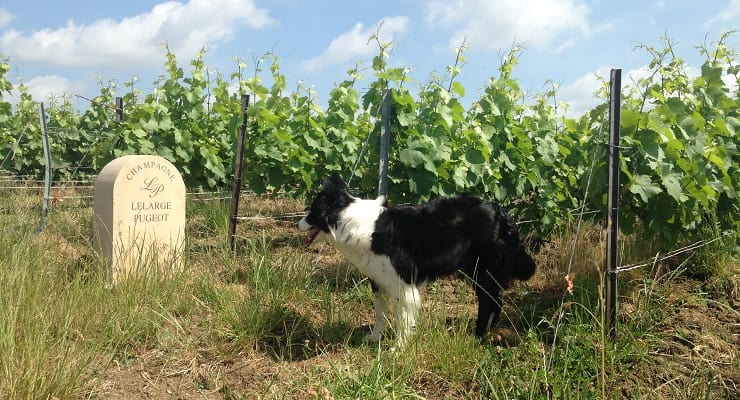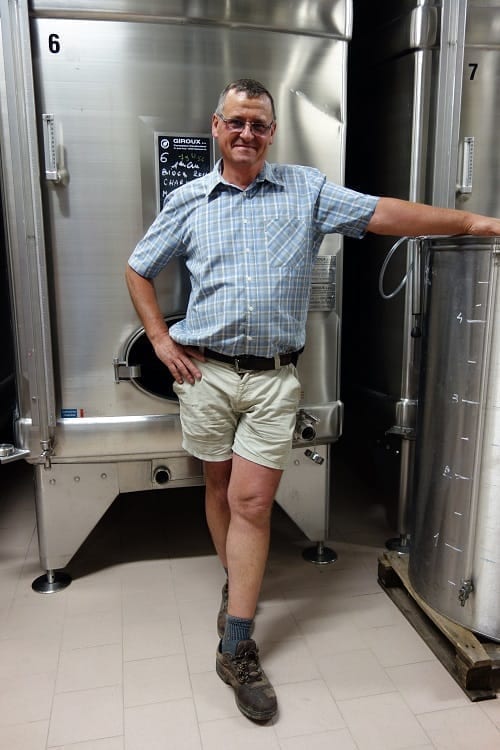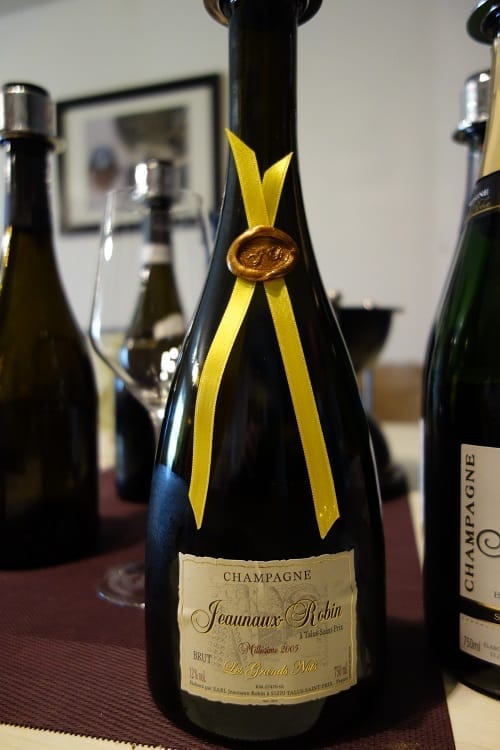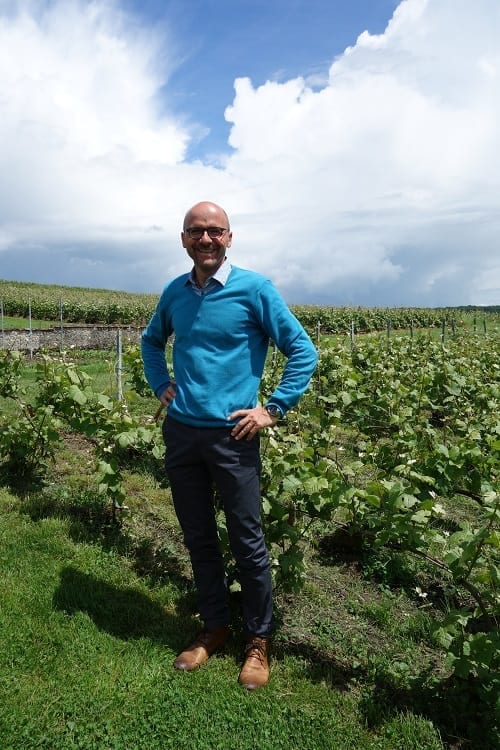Biodynamic Champagnes
29th December 2016

Biodynamic wines are still a rarity in Champagne, but look hard enough and you’ll find some smaller and lesser known producers are making excellent, noteworthy wines. Biodynamic winemaking, with its holistic approach to the vineyard ecosystem and the health of the soil, plants and organisms both above and below ground, demands determination, commitment and belief. By taking into account the effect of the moon on plant growth it harks back to ‘the old ways’ of doing things, when a readily available chemical solution wasn’t available to the vigneron, who instead had to know his or her vines up close and personal.
In the small village of Vrigny, in the Petite Montagne de Reims to the west of Champagne’s historic main city, is Champagne Lelarge Pugeot. Dominique Lelarge’s family acquired their first vines at the end of the 18th century. Now with his wife Dominique and their three children (the 8th generation to work the land) he works less like his father did and more like his grandfather, with a closer connection to his land and crops. They grow nearly 9ha of mainly Pinot Meunier across 22 parcels in and around the village, helped by vineyard dog Dixie who runs around madly, barking with uncontrollable excitement whenever a trolley loaded with cases of Champagne is steered through the yard.

An annual production of around 55k bottles per year benefits from careful vineyard management. The Lelarge’s spray preparations of clove and oregano essential oils, seaweed, copper and salt, and even a solution of diluted honey from their own bees on the vines. The same care goes into the winemaking and they make their own yeast by picking and fermenting a small number of grapes before the harvest starts. None of the wines are fined, a no-sulphur cuvée is on its way and as well as excellent Champagnes Lelarge Pugeot also make a small amount of Coteaux Champenois still wine, including a white Pinot Meunier. Quality is very high across the whole range, from the Brut Nature (aged for 8 years on its lees), the 100% Pinot Meunier Les Meuniers de Clémence, new cuvée Les Charmes de Vrigny and a super, serious Rosé de Saignée, 60% Pinot Meunier and 40% Pinot Noir macerated for 37 hrs, with zero dosage and notes of cranberry and spice.
Twenty or so miles to the south, in the Côte des Blancs, Champagne Larmandier Bernier are producing wines with poise and precision in the Premier Cru village of Vertus. Established in 1971, they became biodynamic in the 1990s and have 16ha of vines across 50 separate plots, all in the Côte des Blancs. 14ha of the vineyard is planted with Chardonnay and just 2ha with Pinot Noir for the production of their rosés or in the best years, a rare Vertus rouge. Grapes are generally picked 2 or 3 days after the harvest has begun in order to get optimum sweetness levels. In 2009 they replaced their press with two smaller ones in order to give them more flexibility to press different parcels separately. All of the Chardonnay is vinified in Austrian oak using indigenous yeast and goes through malolactic fermentation (MLF) and spends 10 months in barrel, although as an experiment some Chardonnay is spending 3 months on its skins in a terracotta amphora. For the Pinot Noir, 80% is vinified in stainless steel, with 20% in a concrete egg. The wines are unfined and unfiltered and all are manually disgorged.

Larmandier Bernier don’t market their wines as biodynamic. For husband and wife team Pierre and Sophie it’s just the only way of doing things, not a marketing ploy. They produce a full range of wines: Latitude (produced from Chardonnay grapes grown along the same line of latitude south of Vertus) and Longitude (from grapes grown along a north-south axis linking Cramant, Azive, Oger and Vertus), Terre de Vertus, a single vintage, single vineyard, 100% Chardonnay Champagne with plenty of fruit and zero dosage to let the true expression of the wine come through, Les Chemins de Avize, from two plots in the Grand Cru village of Avize, with well-integrated oak and just 2g/l dosage and Vieille Vigne du Levant, from vines aged from 48 to 75 years old, aged for 7 years on the lees and made from grapes from Grand Cru Cramant. The 2007 vintage shows delicious savoury mushroom/yeasty character developing. Finally, a robust Rosé de Saignée is produced by an unusual hybrid method of adding a little Pinot Noir red wine to a rosé which has already taken on the colour of Pinot Noir from a few days’ maceration. It has a length of flavour as long as the drive back to Epernay.

Further south again, at the very southern tip of the Côte des Blancs in the gentle Val du Petit Morin, Champagne Jeaunaux Robin are another family affair creating fine wines from just under 6ha of vines growing mainly in the tiny village of Talus St Prix. Producing their own wines since 1973, Cyril and Clémence have been working organically for 10 years and biodynamically since around 2010. Given that their vineyard starts at the end of their garden, just behind the children’s trampoline, and that the grass of the lawn merges into the grass between rows of vines, it’s unsurprising that they would choose to use biodynamic horn manure and horn silica sprays instead of chemicals. The scale here is again of a domestic, family concern producing around 40k bottles per year. There are two basket presses in the garage, the family car parked next to one; the grape must flows by gravity into settling tanks under the back door and on into the tidy winery beneath the house. Cyril uses old oak barrels to vinify (but not to age) around a quarter of the wines, without MLF, with the rest in stainless steel, with MLF. The crisp and bright Éclats de Meuliere is a Pinot Meunier dominant wine, with 30% Pinot Noir and 10% Chardonnay, with either 5.5g/l or zero dosage; Fil de Brume is Chardonnay based, with 20% Pinot, again with 2 dosage options, at 0 or 6g/l. A fine Rosé de Saignée is made of 100% Pinot Noir macerated for between 48 and 72 hours to extract the colour and flavour of strawberry ice cream. Another highlight is the vintage Les Grands Nots, from 2005, a roughly equal blend of Chardonnay, Pinot Noir and Pinot Meunier, all vinified in oak and with a complex nose of brioche, dried apricot, prune and coffee. With zero dosage, this is a wine packed full of flavour and with many more years ahead of it.

When you talk to these producers, and others like them, and ask them what their neighbours whose grapes grow just a metre or so away from theirs think of what they are doing, you generally get the same answer – ‘they think we’re crazy’. Tasting these Champagnes, and appreciating the philosophy, family pride and sheer hard work that goes into producing them, I don’t think so. Seek them out and try them – you’ll be sure to agree.
![]()
Glass of Bubbly
Executive editor of news content for the website Please enjoy the articles that we share - We hope you find our love for Champagne & Sparkling Wines both interesting and educational.
